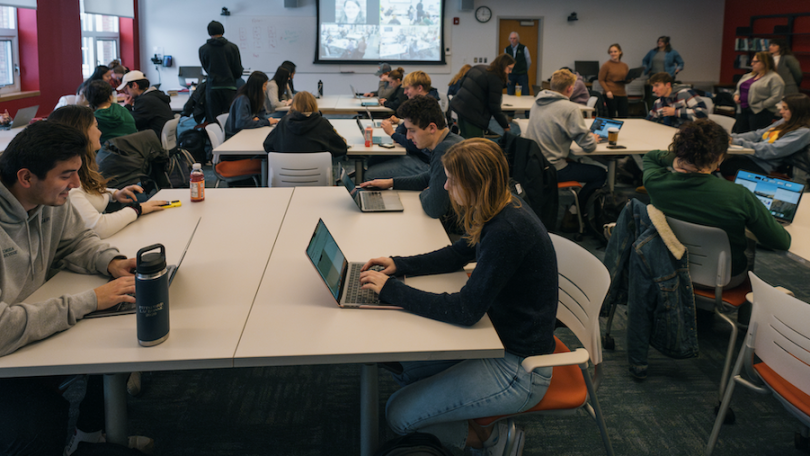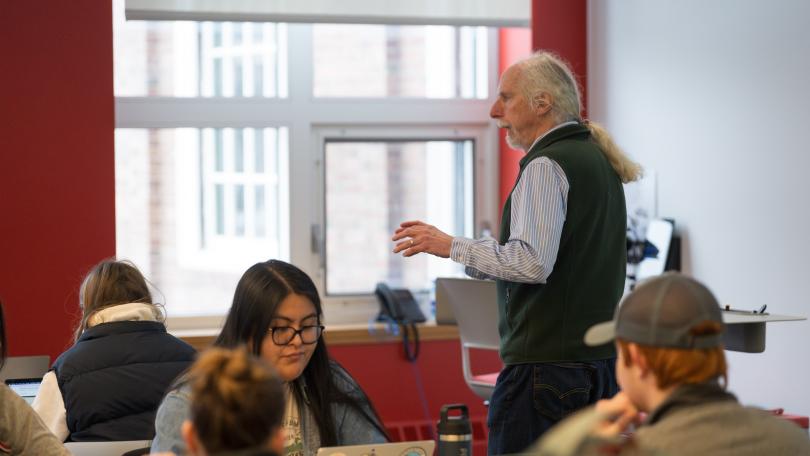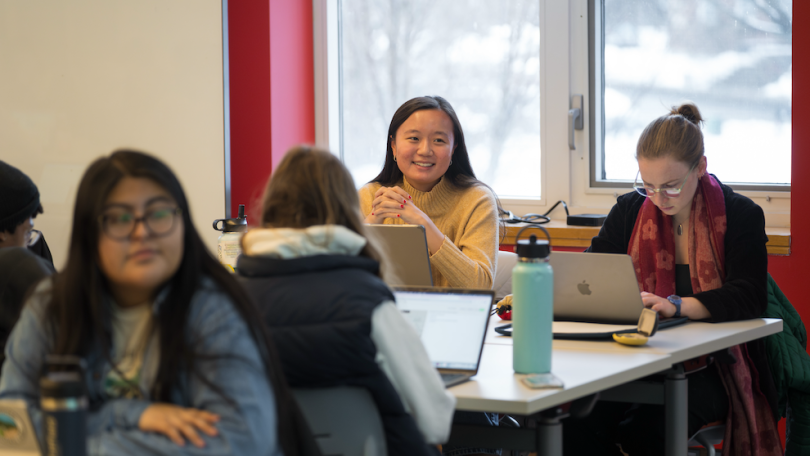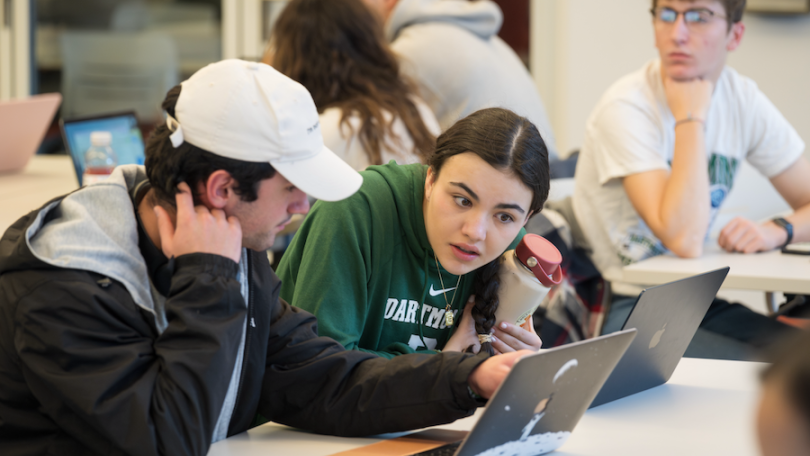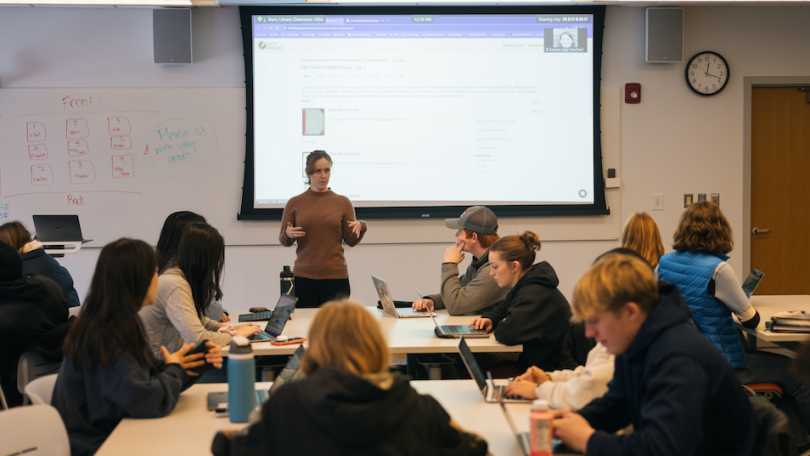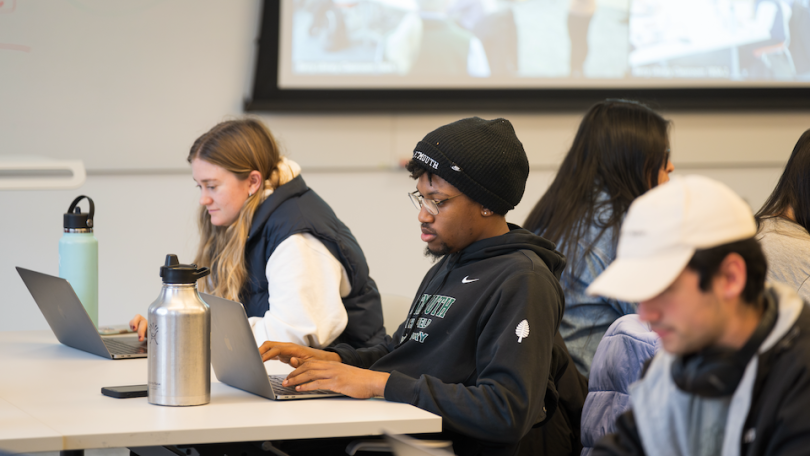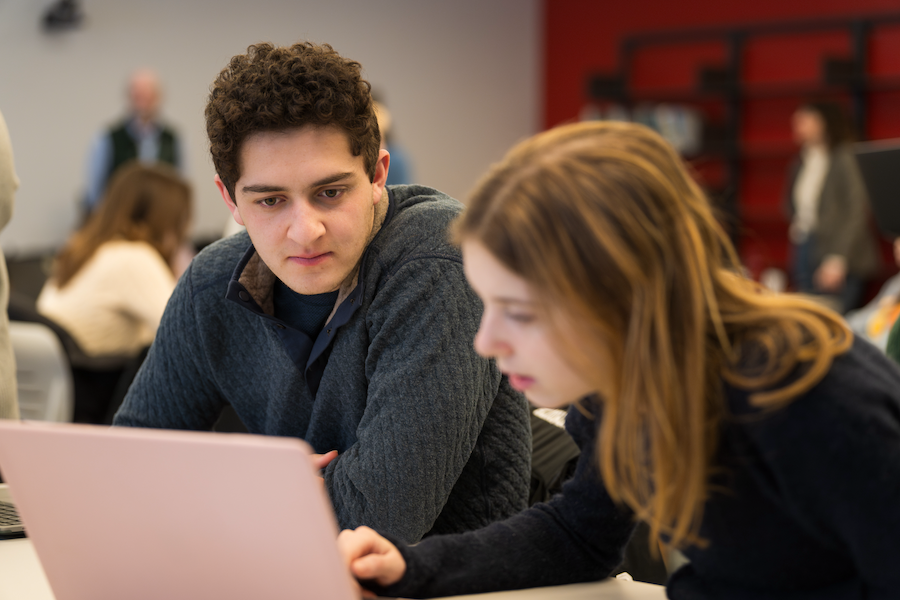
Dartmouth Libraries has a new collaborative teaching and learning space - The LINK! Discover how one Dartmouth professor partnered with library specialists in The LINK to blend history and science while sparking new ideas and knowledge.
***
In Professor Ross Virginia’s Arctic science courses, “understanding the past is a way to consider the future of the Arctic.” To build a connection between Arctic science and the region's history, Ross partnered with librarians, archivists, and digitization specialists, and co-designed an interactive course that would do just that. He also knew this unique approach would need a dynamic classroom environment to engender active learning and partnered teaching - a combination that Dartmouth prides itself on and the Libraries excel at.
Where is such a space? The LINK! It's the Libraries' newest collaborative teaching and learning space located in Berry 180.
From literally getting hands-on with Arctic historical items with Jay Satterfield and Scout Noffke from Rauner Special Collections Library to learning with Laura Braunstein, Elizabeth Shand, Daniel Lin, and Samara Cary from the Digital by Dartmouth Library team - the 41 students in Ross’s Winter Term class, Environmental Issues of Earth’s Cold Regions, participated in and benefited from a re-envisioned active learning experience.
